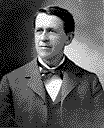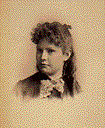

 |
 |
|
In that same year a forward movement was made in Wisconsin. A bill for a referendum was submitted to the legislature of that year and passed both houses.18 During the summer of 1880 the national leaders held a series of conventions in the states of the Middle West. Wisconsin's promising condition attracted their attention, and a state convention was held June 4 and 5 in Milwaukee, at which Miss Anthony, Mrs. Stanton, Lillie Devereux Blake, and other national leaders were present. Twenty-five delegates were present from the local associations throughout the state. A state organizer, appointed shortly after the Madison convention, was sent out to develop suffrage sentiment. Lectures were given and clubs were formed in Milwaukee, Wauwatosa, Bay View, Rochester, North Prairie, New London, Oshkosh, and Ripon. In Milwaukee two new organizations came into existence, the South Side Woman Suffrage Association and the Olympic Club of the North Side. The Whitewater Woman Suffrage Club was organized in October, 1882, and among other activities conducted a column "Equality Before the Law" in the Whitewater Register. It soon numbered one hundred members. |
||
 John Olin |
Suffrage workers were disappointed over the defeat in the legislature of 1881 of their bill for a popular referendum on woman suffrage, and not until the summer of 1882 was any further organized effort made. On August 28, 1882 a call was issued for a meeting at Madison, signed by fifty-five prominent men and women of the state, headed by General Fairchild and General E. E. Bryant. The convention opened September 7. Lucy Stone and her husband, Henry Blackwell, were present; also Mary E. Haggart and two suffrage workers from England. About thirty-five delegates were present from the several local associations. The convention began with an address of great force and cogency by President Bascom. The next morning's business session was presided over by John M. Olin, a prominent Madison lawyer. It was determined to create a new organization, which should be independent of the former Wisconsin association. However, a connecting link with the old association was preserved by the election of its president, Mrs. Wolcott, to the presidency of the new association. Among the other officers chosen were the Reverend Olympia Brown, first vice president, and Mrs. Helen R. Olin, chairman of the executive committee. It is an open question whether or not the organization at Madison should be considered as a reorganization of the earlier association, which had during its latter years been almost localized in Milwaukee. The new organization was the Wisconsin Woman's Suffrage Association.19 | |
 Women's Club of Richland Center |
In June, 1884, on the resignation of Mrs. Wolcott, Mrs. Emma C. Bascom became president of the Wisconsin Woman's Suffrage Association. She in turn was succeeded at the convention at Richland Center in the autumn of 1884 by Mrs. Hattie Tyng Griswold of Columbus. This convention of 1884 was the first regular convention after the reorganization of 1882. Special meetings had been held in 1883 at Racine and Janesville. Richland Center, thus early identified with woman suffrage, remained a center of suffrage interest until the enfranchisement of women was achieved, largely because of the devotion of the James family. Two sisters-in-law, Mrs. Laura and Mrs. Georgia James, were active workers and the two husbands were hardly less interested. Senator N. L. James in 1885 introduced the measure giving school suffrage to women, and Senator David H. James the measure which brought about the referendum of 1912. Miss Ada L. James, daughter of Laura and David G. James, has been an active suffragist all her life. |
 David James |
 Ada James |
 Ada James |
|
18 Madison Wisconsin State Journal, March 3, 1880.
19 There has been much confusion about the date of the birth of the Wisconsin Woman's Suffrage Association. The report in the Madison Wisconsin State Journal, Sept. 8, 1882 proves this to be the date. See also Wisconsin Woman Suffrage Directory (Milwaukee, 1885). This is supposed to have been prepared by Sarah H. Richards, a teacher, for the convention of 1885. She refers to the Madison convention as "the reorganization in '82."